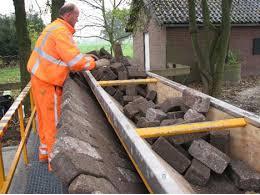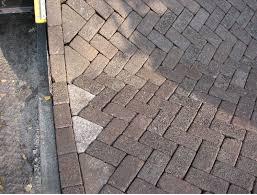By
GUTTA.GURUKRISHNA
Abstract
The evolution of innovative printing techniques in the three-dimensional world goes on. Before we reported about the amazing rapid prototyping revolution, about printers that are able to print complete buildings and about the inkjet printer for streets. Now there is also the road printer. The Tiger Stone brick printer makes road construction as easy as laying laminate flooring. BLDGBLOG considers the invention of the Dutch company to be a real “road printer”.
Introduction
Brick roads have been around us for centuries. They are both durable and treat for the eyes and easy to produce and reuse, cement pavers last a very long time and they are easy to repair and replace But Now – a -days there are difficult to find because building them is an arduous and back breaking task. Engineers are always busy in finding solutions to problem around the world and strive to decrease the Time consumption to complete a task. One such an endeavour has resulted in one such machinery which is more than just a symbol of great engineering it is both cool and awesome “THE TIGER STONE”. As Belgian manufacture RPS, the machine caries ergonomic benefits for its operators: “because the finishing of the edges is directly done on the machine, the pavers do not have to get on their knees for fixing the edges “they work in a good ergonomic position which makes their job much lighter and more efficient and road is filled and finished instantly”.
MACHINE DESCRIPTION
The tiger stone is a six meters wide machine that can repave entire street at once, including edges. The device is amazingly simple to handle. Any person can work with it within 5 minutes. Naturally the stones fall on the road directly into the appropriate pattern. The tiger stone is a solution for the heavy work that street pavers in Holland usually have to do manually. this machine is known as TIGER STONE paving machine and is being called ‘road printer’ due to the way it works .
PROCEDURE
• The RPS6 ROAD PRINTER is a divisible paving machine capable of laying bricks for roads. As the machine roll backwards ‘GRAVITY’ brings the bricks flat to rest on the ground.
• A front loader fills the brick hopper with loose bricks, the bricklayers stand on the machine and assemble the pattern vertically.
• Tiger stone requires 1-3 operators on its platform to provide the machines pusher slot with looser bricks from the hopper.
• The green machine runs entirely on electricity, moving at a speed of 13 feet per a minute.
• Paving stones are lowered smoothly via a curved ramp into place in the correct pattern, it selfsteers to keep the road straight and in place.
• Then tamper (or) steamroller pushes the bricks down to secure them in place.
• Bricks roads are experiencing a revival, because they can be reused easily, filter water and without expanding ice.
• The road printer is capable of creating roads anywhere from 3-20 feet wide.
• As construction workers insert brick into the machine’s forward compartment, road printer automatically processes the bricks and splits the assembled road from its rear.


ADVANTAGES
• The tiger stone brick printer makes road constructions as easy as laying laminate flooring.
• Tiger stone is powered electrically and has very little moving parts therefore the noise and maintenance is quite less.
• It can lay down about 400 yards of road per day.
DISADVANTAGES
• The cost of the equipment is expensive, it ranges from $ 75000-$ 81500.
CONCLUSION
Most road projects today involve modifications to existing roadways, and the planning, operation, and maintenance of such projects often are opportunities for improving ecological conditions. A growing body of information describes such practices for improving aquatic and terrestrial habitats.
We at engineeringcivil.com are thankful to “Gutta Gurukrishna” for submitting this information to us.
If you have a query, you can ask a question here.


